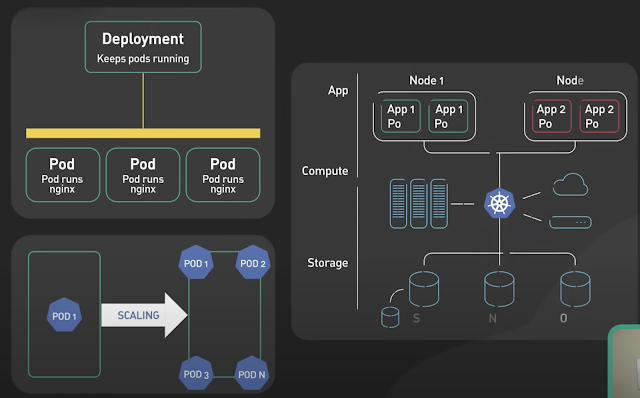Making NFS server Live:
Server side (Server IP 10.1.31.1):
1. Check nfs-utils is installed or not using
#yum list nfs-utils
2. Edit /etc/exports , add dir you want share with netrwork information and permision
# vi /etc/exports
/var/ftp/pub 10.1.0.0/16(rw,sync,no_root_squash)
3. Restart nfs service
# service nfs retstart
or
# service nfs reload
4. Check port & shared dir using
# rcpinfo -p
# export -v
# service portmap status
Client Side (Client IP : 10.1.0.0/16, eg 10.1.31.67):
1. mount shared nfs folder
# mount 10.1.31.3:/var/ftp/pub /mnt
2. Do static mount using /etc/fstab
# vi /etc/fstab
10.1.31.1:/var/ftp/pub /mnt nfs defaults 0 0
Subscribe to:
Post Comments (Atom)
Basics of Kubernetes
Kubernetes, often abbreviated as K8s , is an open-source platform designed to automate the deployment, scaling, and management of container...

-
IOPS (input/output operations per second) is the standard unit of measurement for the maximum number of reads and writes to non-contiguous ...
-
Change Views DEFINER without ALTER VIEW: UPDATE `mysql`.`proc` p SET definer = ‘root@localhost’ WHERE definer=’root@foobar’ AND db=’w...
-
The Unix top command is designed to help users determine which processes are running and which applications are using more memory or process...

3 comments:
simple and useful
Great post. Exactly what I needed. Thanks!
Easy to use
Post a Comment